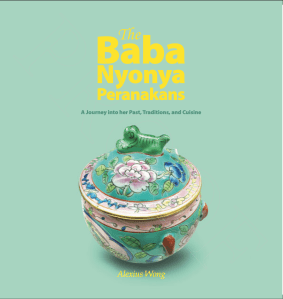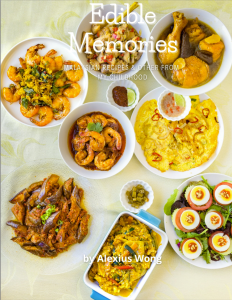
This rich dish is popular in both the Malay and Peranakan cultures of the Malacca region, and was most likely borrowed from the host culture by the Peranakans after centuries of settling in the area and assimilating various elements surrounding them. The depth of flavor in the dish is achieved by the use of the pungent belacan (shrimp paste), the spicy chili peppers, a good amount of fragrant shallots, and the slightly briny dried shrimp—all contributing to a full-flavored and complex sauce. The richness of the coconut milk is paired with the yam that absorbs all the flavors of the sauce. Every ingredient complements the others to produce this flavorful and satisfying vegetable dish.
Although this is a rather short recipe in terms of the list of ingredients and cooking process, the complex flavors in the end product belie its simplicity. Most Nyonya recipes have a rather lengthy list of steps that can be daunting to many cooks and the uninitiated to this cuisine. But here we have one that is within the reach of any cook that still provides deep flavor and gastronomic satisfaction. This recipe is a regular during many of my special dinners for my friends for the above reasons, and it is also a favorite of many of my non-Peranakan friends. Once a friend exclaimed that it tasted like soul food, perhaps alluding to how the dish hit the right spots for him. For me, a Baba Peranakan, it is one of my favorite dishes; not only is it soul stirring, it also reminds me very much of Mamah, my grandmother—simple, warm, and loving.
When preparing the dish, make sure to cut the cabbage leaves into large pieces so they stand out among the bold flavors and the yam pieces. If you cannot find yams, you may use sweet potatoes, which are sweeter than yams. Serve some sambal belacan on the side to add some more “kick” to the dish.
Having tried this recipe, you will see why this dish is a favorite with my father and his relatives who were raised in Malacca.
Recipe from The Baba Nyonya Peranakans book
Serves 4
Preparation time: 45 minutes
2 tablespoons dried shrimp, soaked in water for 10 minutes then drained
2 Finger Hot red chili peppers, stemmed and seeded, or 1 teaspoon paste/sambal oelek
6 small (60 grams/2 ounces) shallots, peeled and roughly chopped
12 grams/1 teaspoon belacan (shrimp paste)
1 cup coconut milk
1 medium (250 grams or ½ pound) Asian yam* (Malay: keledek), peeled and cut into medium-size cubes, or sweet potato
1 small white cabbage, ribs removed and each half cut into 3 or 4 wide ribbons (4 cups)
⅓ teaspoon salt
(* The standard term “yam” is known as “sweet potato” in SE Asia)
- In a food processor, chop the dried shrimp into fine bits. Remove and set aside. Add the chili pepper, shallots, and belacan to the processor. Purée into a smooth mixture, remove, and set aside.
- In a pot on medium-high heat, combine the dried shrimp, chili-shallot mixture, and the coconut milk. Bring to a boil, then lower the heat to medium-low.
- Add the yam, cover with a lid, and simmer for 10 to 12 minutes until partially cooked (add a bit of water if the mixture gets a bit dry).
- Add the cabbage and salt. Cover and cook for 5 minutes until the cabbage is just done. It is tempting to add some water at this point, but refrain from doing so as the cabbage will release some moisture as it cooks— you want to have a rather thick sauce in the final product.
- Remove and serve immediately with sambal belacan (recipe)


The hardcopy and e-book of The Baba Nyonya Peranakans book (1st image) and Edible Memories e-cookbook (2nd image) are available – more information on the Homepage.

Simply love your appetising recipes.
LikeLike
Thank you very much. I hope you get to try them successfully.
LikeLike
For me the high point of this dish is the addition of sambal belacan (with a squeeze of lima kasturi) to the kuah. This guarantees an extra scoop or two of rice on my plate. My mother would usually use sweet potato as this was easily grown in our garden patch in Bukit Rambei, Melaka; the leaves were then fried in soya sauce with garlic and ikan bills to serve as an additional dish.
LikeLike
Thanks for sharing an extra dish made from the yam leaves that I was not aware of.
LikeLike
Thank you so much for your lovely Peranakan dishes. This dish reminds me of my Mamah too! Thank you too for your parents, who are lovely people, sharing their knowledge of dancing with us in the PAA Association. You are all a family of ‘givers’. God Bless you all.
LikeLike
Thank you Anne for sharing that memory and your kind comments.
LikeLike